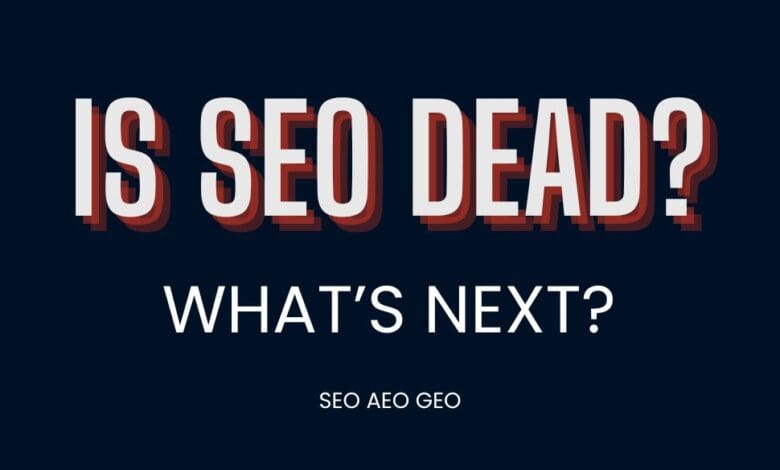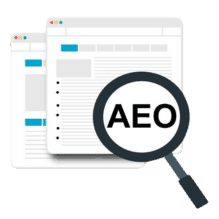Is SEO Dead? Why AEO and GEO Matter More Than Ever as 2025 Approaches

SEO is always evolving, but the changes this past year feel especially different. We’re not just refining the old tactics; we’re building on them with new frameworks. The result? A world where SEO relies on two new pillars: Answer Engine Optimization (AEO) and Generative Engine Optimization (GEO). These might sound like jargon, but they’re fast becoming the backbone of effective digital strategies. With Google pushing for faster answers, and AI-driven tools like ChatGPT shaping how we consume information, SEO is evolving. Let’s dig into what that means as we wrap up 2024 and gear up for 2025.
SEO Today: Not Just About Google Rankings Anymore
Back in the day, SEO was mainly about keywords, links, and technical tweaks. Add a few keywords here, secure a few links there, and boom—you’d start climbing the search rankings. But that was before AI started changing the way people search for information. Google now focuses heavily on user intent, relevance, and overall experience. As a result, the search landscape is much broader and demands a more nuanced approach. Here’s where AEO and GEO come into play.

AEO: Answer Engine Optimization — Fast, Precise, and Voice-Ready
Think about it: How often have you just asked your phone or smart speaker for an answer instead of typing it into a search bar? “What’s the weather like tomorrow?” or “How long should I cook pasta?” With voice search and virtual assistants, people expect direct answers, not long-winded articles. That’s where AEO comes in—optimizing content for quick answers that work seamlessly with voice assistants like Siri, Alexa, and even AI tools like ChatGPT.
Why AEO Matters Now?
In a world that’s moving faster than ever, AEO is a direct response to people’s desire for instant information. When someone asks, “What’s the best way to boost my immune system?” they don’t want a full-blown scientific study—they want a quick, actionable answer. AEO makes sure your content is structured to answer these questions directly, helping you capture the growing audience that relies on voice and AI for answers.
How to Make Your Content AEO-Friendly?

1. Think Like a Searcher: Start with real questions. If you’re in fitness, a post titled “How Many Steps Should I Walk Daily?” will rank better in voice search than a vague “Step Goals and Health Benefits.”
2. Use Schema Markup: Schema might sound technical, but it’s simply a way to give search engines more context. For instance, if you run a restaurant, schema can help you appear in searches for “best vegan-friendly restaurants near me,” with details on your menu, hours, and reviews—making it easy for Google to share those highlights with searchers.
3. Optimize for Conversational Language: Voice searches are often phrased like conversations. Instead of just “coffee recipe,” create content titled, “What’s a Quick Coffee Recipe for Beginners?” You’re matching how people naturally speak, which increases the chances of appearing in voice search results.
GEO: Generative Engine Optimization—Meeting AI’s Demand for High-Quality Content
As more people turn to AI chatbots for information, content quality is under a brighter spotlight. With tools like ChatGPT, Bard, and Gemini using existing content to generate answers, brands need to be sources of accurate information. Enter GEO, where the focus is on crafting authoritative, well-structured, and trustworthy content that AI can pull from confidently.
Why GEO is Critical as 2025 Nears
AI chatbots aren’t just pulling information from the internet—they’re curating answers based on content reliability and authority. When someone asks, “How do I start investing?” it’s the high-quality, well-organized content from credible sites that gets chosen. GEO is about creating that reliable content. If you can become a trusted source that AI tools rely on, your brand can tap into a massive, growing audience of AI-driven queries.
Steps to Optimize Content for GEO
1. Build Authority and Trust: AI tools prefer content from credible sources. For example, if you’re writing about healthcare, aim to cite sources like medical studies or experts. This helps generative AI tools treat your content as authoritative.
2. Organize Content Logically: Structure matters. Use clear headers, bulleted lists, and step-by-step sections. If your article is “A Guide to Plant-Based Diets,” break it down into sections on meal planning, nutritional considerations, and shopping tips. The cleaner the structure, the easier it is for AI to parse and present.
3. Keep Information Current: AI loves up-to-date content. If you have a blog on “Best Social Media Strategies,” make it a habit to update it with the latest trends and tools every few months. Not only does this keep you relevant in search engines, but it also ensures AI platforms can rely on your insights.
SEO Isn’t Dead; It’s Evolving with AEO and GEO
The “SEO is dead” headline makes for great clickbait, but the truth is, SEO is simply adapting. AEO and GEO are more than just add-ons; they’re essential expansions of SEO in today’s digital landscape. As 2024 closes, SEO still holds strong—only now, it’s better equipped to serve the needs of voice search, AI, and users who expect fast, accurate answers.
In 2025, SEO will be a broader toolkit than ever before, with AEO and GEO acting as critical components. Brands that leverage these tools will be primed to stay relevant, visible, and trusted across both traditional search engines and emerging AI platforms. So, is SEO dead? Not even close—it’s just growing smarter.






